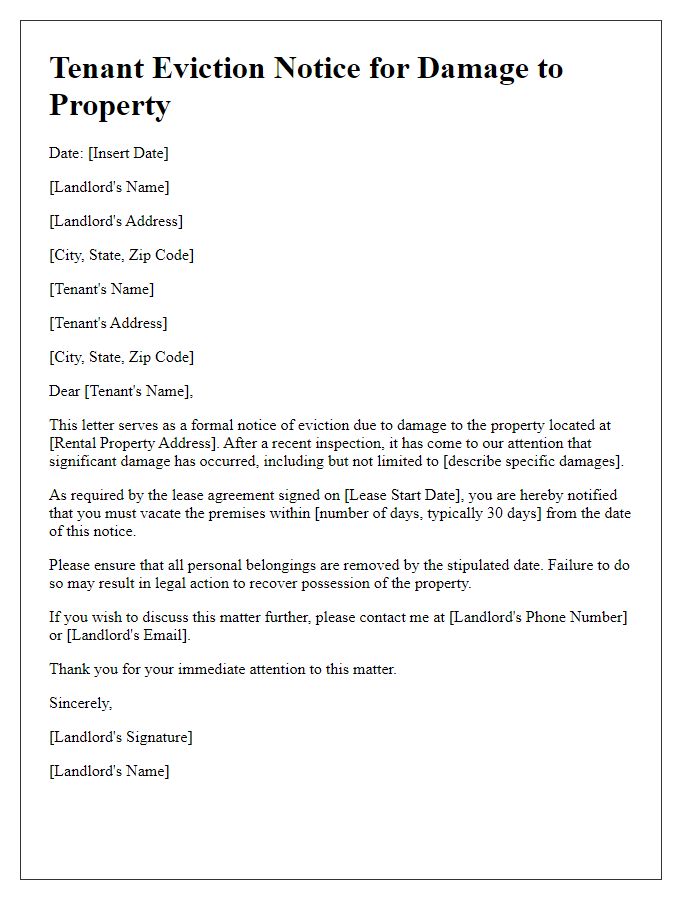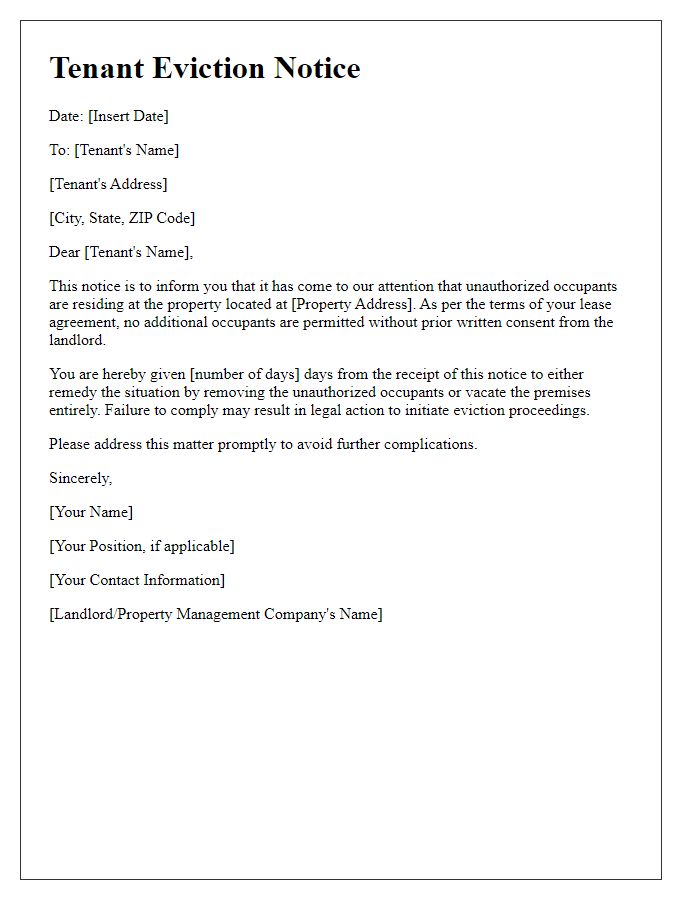If you're navigating the challenges of tenant eviction, it's essential to have a clear and effective eviction notice template at your fingertips. This document serves as the formal communication that outlines your intentions and the reasons behind the eviction, ensuring both clarity and legality in the process. It can significantly streamline what can often be a stressful situation, helping you communicate your message in a professional manner. Curious about what to include in your eviction notice? Read on to explore a step-by-step guide that will help you create a comprehensive eviction template!

Legal Compliance
An eviction notice must comply with legal requirements set forth by state laws, typically detailing the reason for eviction, such as non-payment of rent or lease violations, along with the specific amount owed (often stated in dollars), or description of the violation (like unauthorized pets). The notice must include tenant information, including full name and current address, along with the landlord's contact information. Additionally, the notice should state the date by which the tenant must vacate the property, which usually ranges from three to thirty days depending on local regulations, and must clearly indicate any legal actions that may follow if the tenant fails to comply. Serving this notice according to local guidelines, such as certified mail or personal delivery, ensures adherence to legal protocols and protects the landlord's rights in potential court proceedings.
Clear Reason for Eviction
An eviction notice must clearly outline the tenant's breach, such as unpaid rent exceeding 30 days, or violation of lease terms like unauthorized pets or excessive noise disturbances. Legal requirements often dictate specific formats, including date of notice, tenant's name, and property address, which is typically located in residential areas like urban neighborhoods or suburbs. Local laws may also stipulate the notice period, often ranging from 3 to 30 days, allowing tenants time to remedy the situation or vacate the premises. Additionally, including a contact number for the landlord or property manager facilitates communication regarding the notice and potential resolution of disputes.
Specific Date of Vacating
Eviction notices are essential legal documents that inform tenants of the need to vacate their rental properties. Each eviction notice must specify a date by which the tenant must leave, often following local regulations outlined in jurisdictions like California or New York. For example, in California, landlords can issue a 30-day eviction notice if the tenant has resided in the property for less than a year, while tenants over one year might require a 60-day notice. It is crucial to outline any reason for the eviction, whether it is non-payment of rent or breach of lease agreement, emphasizing the eviction date clearly. Additionally, landlords must provide precise instructions regarding the return of keys and any security deposit settlements as per state laws, ensuring a smooth transition for both parties involved.
Tenant's Address and Details
A tenant eviction notice is a formal document notifying a tenant of the landlord's intention to terminate the rental agreement. The document includes critical information such as the tenant's address, typically formatted as: [Street Address, City, State, ZIP Code]. Important details also encompass the date of notice issuance, reasons for eviction such as failure to pay rent or lease violations, and the specific timeline allotted to the tenant for vacating the premises, often prescribed by state law, which can range from 3 to 30 days depending on jurisdiction. Additionally, it may reference local rental laws or ordinances to ensure compliance, safeguarding both tenant rights and landlord interests.
Contact Information for Landlord
A tenant eviction notice serves as a formal communication from landlords to tenants, outlining the intent to terminate the lease agreement. This document often includes critical details such as the landlord's contact information, which typically encompasses the landlord's full name, phone number, and address. In some regions, specific laws mandate that landlords provide a direct way for tenants to reach them for any queries or clarifications. An eviction notice must specify the reason for eviction, such as non-payment of rent or lease violations, along with a deadline for the tenant to vacate the premises. Jurisdictions may differ in the notice period required; for instance, some areas might require a 30-day notice, while others could stipulate a shorter or longer period. Clear communication in this document is essential to prevent misconceptions and potential legal disputes.
Letter Template For Tenant Eviction Notice Template Samples
Letter template of Tenant Eviction Notice for Health and Safety Violations













Comments